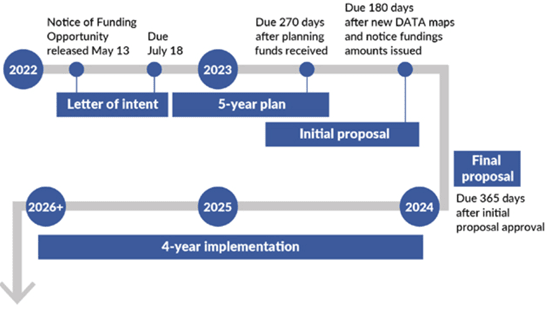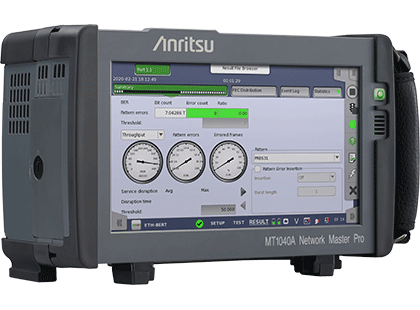A recent blog on the National Telecommunications and Information Administration (NTIA) website highlighted how many workers will be involved in bringing high-speed Internet access to rural areas throughout the United States. It opined five steps that state Internet Service Providers (ISPs) and construction companies should immediately take to best prepare those workers for the upcoming Broadband Equity, Access, and Deployment (BEAD) rollout.
Among the most important aspects discussed in the post was the importance of education and training those workers, ranging from network engineers to general laborers. Much of this workforce will be inexperienced in fiber networks. According to the blog, education and training must begin for the BEAD timeline to continue to be met. The NTIA estimates it can take a year to get workers up to speed.
As previously outlined, proper test solutions are essential for the successful rollout of rural networks. They can also help support education and training initiatives. Many solutions have dedicated features and functionality to make testing more manageable and more efficient, assisting inexperienced workers to do their jobs better.
BEAD Refresher
As part of the Infrastructure Investment and Jobs Act of 2021, BEAD provides $42.45 billion in funding to expand high-speed Internet planning, infrastructure deployment, and adoption in all 50 states and six United States territories. When all is said and done, it is expected to provide 25 million Americans with high-speed Internet access.

Figure 1: The BEAD program is in the implementation period.
BEAD is currently in its four-year implementation stage (Figure 1). During this period, states will deploy and install the last-mile elements to make rural broadband a reality. Completion of the rural broadband networks is scheduled for 2028.
NTIA's stance is that to meet the scheduled launch date, some of those billions of dollars must soon be allocated for personnel training. The time and financial resources associated with training and support, as outlined in the NTIA blog, will have a higher return on investment (ROI) if the verification process is accurate and efficient. Test solutions will play a significant role in achieving that goal.
Test Solutions to Simplify Network I&M
With so much time and effort spent training personnel, purchasing test solutions that have simple testing processes and can create efficient pass/fail results is a wise investment. Here are some instruments that achieve that goal.
Remote Operation - Efficient installation and maintenance (I&M) of BEAD networks can be achieved when test solutions can be operated from a central location. For example, Anritsu’s Network Master™ Pro MT1000A and Network Master™ Pro MT1040A (Figure 2) can be centrally managed over WLAN connections to reduce job times by simplifying and expediting measurements, saving results, and unifying report creation.

Figure 2: The MT1040A can be operated remotely, aiding inexperienced field technicians in performing accurate measurements.
Remote operation also allows for on-the-job training. Experienced in-office staff can effectively train personnel while those workers are on-site, helping ensure proper testing is done while creating real-world teaching moments.
Experienced in-office staff can also perform regular maintenance on rural high-speed networks remotely. This can reduce fault resolution time and improve regular maintenance work efficiency.
On-site Test Automation – Field instruments with automation functionality can help reduce the work burden on inexperienced field technicians and shorten job times. The MT1040A has automatic test functions that run scenario files created in advance on a PC by experienced staff. Tests are automatically performed using preset measurement items, procedures, and pass/fail evaluation conditions for simple and efficient network commissioning. Since the scenario files also handle report creation, evaluation and results, inexperienced workers can run accurate tests without operation mistakes and re-tests, saving time and money.
Easy Operation and Analysis – Special, dedicated functions, such as Anritsu’s Fiber Visualizer (FV), can help inexperienced technicians. FV is a fault location function designed to simplify the entire testing process. It automatically selects the testing parameters to ensure the correct setup and provides a simple, graphical summary of the fiber under test within seconds.
Optimized Design – Select test instruments are optimized for simplicity. The Network Master™ MT9090A is designed for technicians of any level, as its hardware and user interface help shorten operator training times. A customizable testing sequence and “Full Auto” mode automates testing and guides novice users. Specialized maintenance wavelengths are also available to eliminate equipment damage and transmission interruptions.
Conclusion
Preparing a workforce for the deployment of high-speed Internet networks as part of the BEAD program requires a multi-layer approach. The NTIA explained that education and training are key elements and should begin immediately. Test solutions with automated testing capabilities and remote connectivity are also essential layers.
To learn more about the BEAD program and effective test approaches, visit our dedicated BEAD page.














